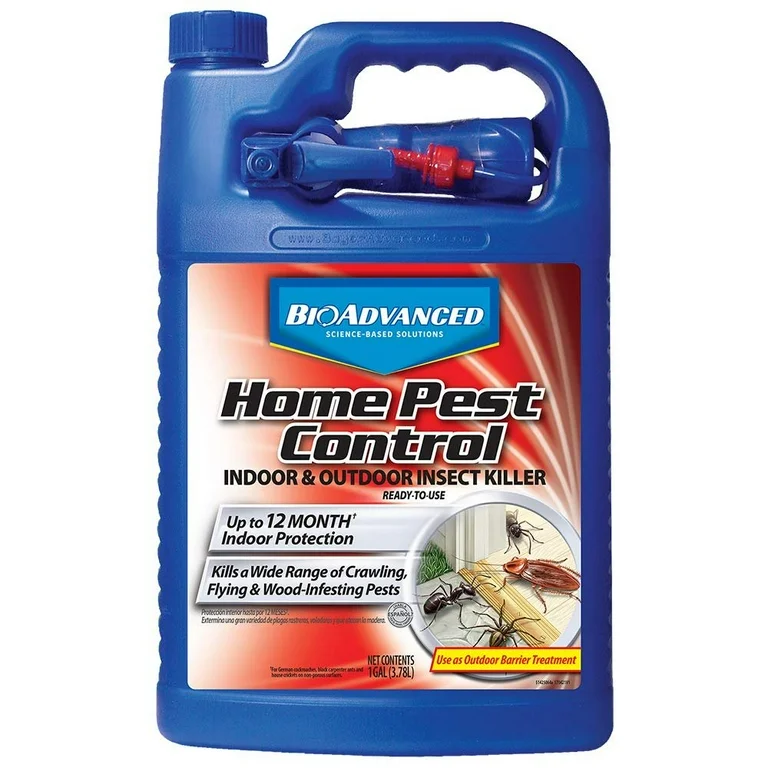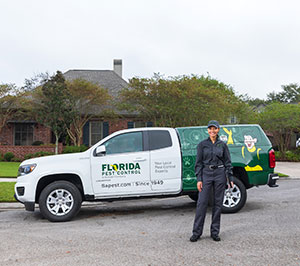Experienced A1 Exterminators Charlotte NC - Quick and Reliable Solutions
Experienced A1 Exterminators Charlotte NC - Quick and Reliable Solutions
Blog Article
Bed Insect Therapy Breakdown: Contrasting Chemical Vs. Non-Chemical Solutions
In the realm of bug control, especially when dealing with the consistent problem of bed bugs, the choice in between chemical and non-chemical treatment solutions can be an essential one. Both methods use distinctive advantages and downsides, influencing aspects such as effectiveness, safety factors to consider, and general expense. By checking out the nuanced details of each approach, a more clear understanding of which course to go after in addressing a bed pest infestation can be achieved.
Performance of Chemical Therapies
Chemical therapies for bed pest invasions have actually been widely identified for their powerful and quick effectiveness in removing these parasites. When thinking about the efficiency of chemical therapies, it is essential to understand that they can provide a fast and detailed solution to a bed insect issue. Expert pest control specialists often count on pesticides to target bed bugs at various phases of their life cycle, including eggs, grownups, and nymphs. These chemicals usually work by interfering with the bed pests' nerves, bring about paralysis and ultimate death.
Moreover, chemical treatments have the benefit of using residual results, implying that they can continue to eliminate bed pests also after the initial application. This residual action is especially valuable in combating any prospective re-infestations. Additionally, the quick activity of chemical treatments can bring relief to people dealing with extreme bed bug problems, enabling them to regain control of their living spaces promptly.
Safety Worry About Chemical Solutions
One vital facet that requires mindful factor to consider when utilizing chemical remedies for bed bug treatment is guaranteeing the security of passengers and the environment. Exposure to specific chemicals used in bed insect treatments can lead to respiratory problems, skin inflammation, or other damaging responses, especially in individuals with pre-existing conditions or sensitivities.
Furthermore, the environmental influence of chemical options is an additional substantial consideration. Some pesticides made use of in bed pest therapies may be hazardous to beneficial insects, wild animals, and environments if they leach right into the dirt or water supply. It is important to use chemical therapies sensibly, adhering to security guidelines, and considering less hazardous options to alleviate these dangers and guarantee the efficient and safe monitoring of bed insect infestations.
Advantages of Non-Chemical Strategies
Considering the potential safety and security worries and environmental effect linked with chemical solutions for bed bug treatment, exploring non-chemical methods offers an encouraging option with a number of distinct advantages. Non-chemical approaches provide a more secure choice for households, specifically those with family pets, people, or youngsters sensitive to extreme chemicals. These approaches eliminate the risks of direct exposure to poisonous compounds, decreasing the capacity for adverse wellness impacts. Moreover, non-chemical treatments are ecologically pleasant, as they do not add to air or water air pollution, making them a lasting choice for bug control.
In addition, non-chemical options can be reliable in targeting bed pests, consisting of hard-to-reach locations where chemical therapies might not penetrate - A1 exterminator charlotte nc. Techniques such as warmth therapy, vacuuming, steam cleansing, and mattress encasements supply comprehensive eradication without the use of hazardous chemicals.
Limitations of Non-Chemical Treatments

Additionally, non-chemical treatments commonly need he has a good point numerous applications to attain successful elimination. This can be lengthy and might not constantly guarantee full removal of all bed pests and their eggs, particularly in hidden or hard-to-reach places.
Furthermore, the success of non-chemical therapies heavily depends on correct execution and thoroughness, which can be challenging for people without professional proficiency. Insufficient application of non-chemical approaches might lead to insufficient obliteration, bring about relentless infestations and the need for additional treatments.
Therefore, while non-chemical therapies have their benefits, it is vital to acknowledge these limitations and consider them when establishing the most reliable technique for handling bed pest problems.
Expense Comparison: Chemical Vs. Non-Chemical Options
Provided the restrictions connected with non-chemical therapies, a crucial element to review in the context of bed insect management is the cost comparison in between chemical and non-chemical options. Chemical therapies typically involve the application of insecticides by specialists, which can range from $250 to $900 per room, depending upon the intensity of the problem and the size of the area more to be dealt with. On the other hand, non-chemical therapies like warmth treatment or steam can be more expensive, with costs varying from $1,000 to $6,000 for an entire home. While the first expense of chemical therapies may seem reduced, several treatments might be required to fully eradicate the invasion, potentially increasing the general cost. On the various other hand, non-chemical options might offer an extra eco-friendly and lasting option, although they can be cost-prohibitive for some individuals. Inevitably, when thinking about the cost of bed insect treatment choices, it is very important to evaluate the upfront expenses versus the effectiveness and long-lasting sustainability of the selected method.
Final Thought

Considering the possible safety and security problems and ecological impact connected with chemical services for bed pest treatment, checking out non-chemical strategies offers a promising alternative with numerous unique advantages.Provided the limitations associated with non-chemical therapies, a crucial facet to evaluate in the context of bed insect management is the cost contrast in between chemical and non-chemical alternatives. In comparison, non-chemical therapies like heat therapy or heavy steam can be a lot more costly, with expenses ranging from $1,000 to $6,000 for a whole home. While the preliminary price of chemical therapies useful source may appear lower, several therapies might be required to totally remove the infestation, possibly raising the total price.In verdict, when comparing chemical and non-chemical bed pest treatment alternatives, it is necessary to consider efficiency, safety, benefits, restrictions, and cost.
Report this page